Rob Macks is a boatbuilder who is also a sculptor and educator. He has been building canoes and kayaks for more than 20 years, doing business as Laughing Loon Custom Canoes & Kayaks in Jefferson, Maine. His North Star design is a strip-built kayak that he has offered since 1993. It is based on the baidarka, a construct of the Aleut kayakers for their forays into the Bering Strait and other northern waters. Traditional baidarkas are skin-on-frame, and most builders conform to that building method. The initial structure devised by the native people involved strips of wood and bone lashed together with sinew and then covered with walrus skin. A modern version typically has a wood frame with a canvas “skin” sewn on, although George Dyson, who wrote a groundbreaking book on baidarkas and is a significant figure in Rob’s life, builds them using bent aluminum tubing for the frames and heat-shrink Dacron for the skin.
Rob’s desire to build the North Star actually was kindled by George Dyson, a scientific historian and kayak designer. In listening to one of his lectures, Rob was awed by Dyson’s description of the baidarka’s handling and speed. Inspired, Rob gave serious study to the type, which included hours and hours poring over anthropological drawings and making many pilgrimages to museums. Eventually, Rob came up with his own interpretation of this ancient watercraft.
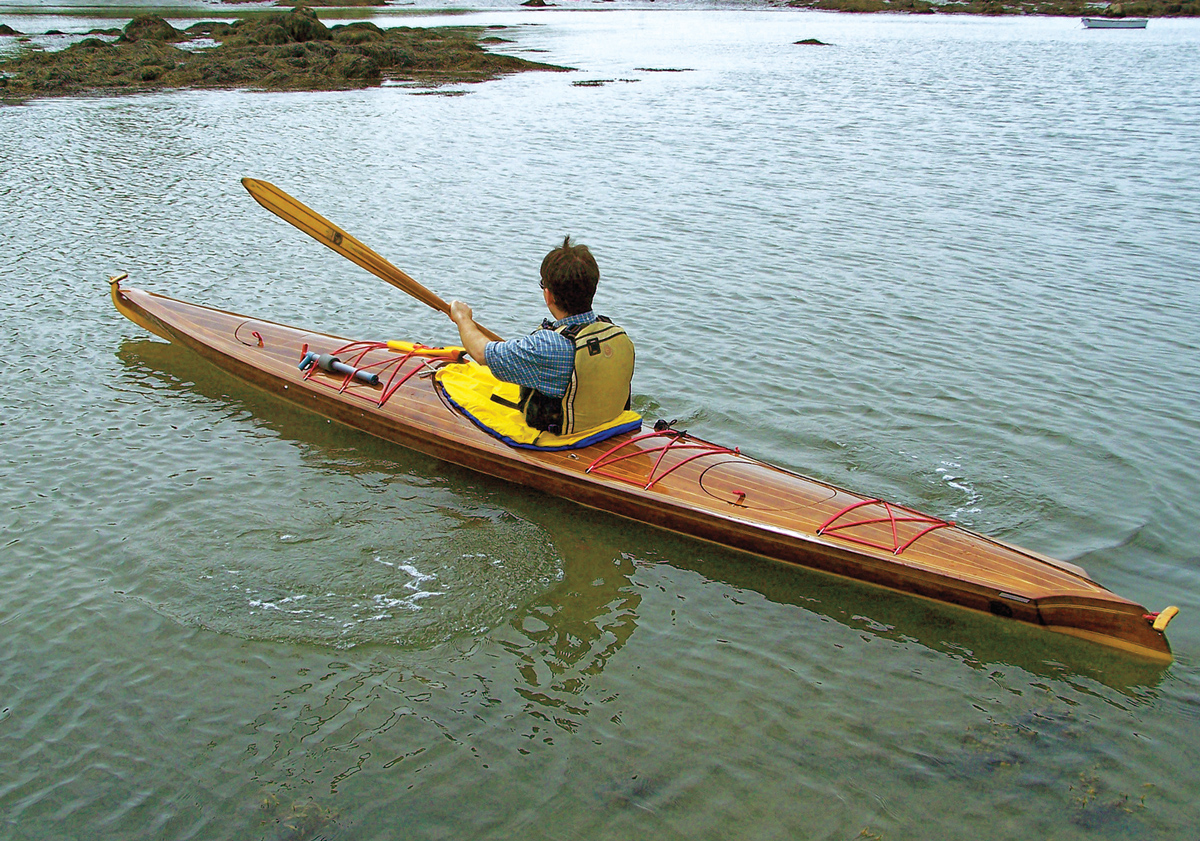 Photo by Serafina Carlucci
Photo by Serafina CarlucciBasing his design on the baidarkas (skin-on-frame boats) used by Aleut paddlers, sculptor and boatbuilder Rob Macks developed the North Star kayak, a stripped version of the type.
Rob tweaked the traditional design while staying true to its spirit. With length overall of 18′ 4″, a beam of 22 1⁄2″, and a weight of about 40 lbs, the North Star is quite a bit larger than a native Aleut kayak (which is between 16′ and 16 1⁄2′ LOA). The bigger size provides more stowage and carrying capacity, and also makes the boat more suitable for a larger paddler. The cockpit is a touch farther aft, but well positioned over the center of balance, which makes for convenient portaging. Rob has added quite a bit of rocker compared to the traditional design to make the longer boat turn easier. Hatches are set into the deck and held there with magnets to maintain the sleek form while still giving easy access to stowed gear.
The bifurcated bow and the pinched-off stern are the most noticeable elements of the North Star’s baidarka heritage. The bow serves two purposes: to cleave the waves in preparation for the more subtle and rounded hull shape that is to follow, and to keep the boat tracking straight through wind and waves. Forward of the cockpit the boat is full-bodied, like a fish. As you move aft of the cockpit, the stern begins to terminate relatively soon in a pinched-off shape that acts like a fixed rudder in a following sea. The short stern is also helpful in maneuvering, and reduces windage and the boat’s inclination to “weathercock” (veer into the wind).
Laughing Loon was the first—and may remain the only—company offering Aleutian region baidarka-style sea kayaks as hard-shell “strippers.” Rob’s style of stripping differs from other builders who use the method.
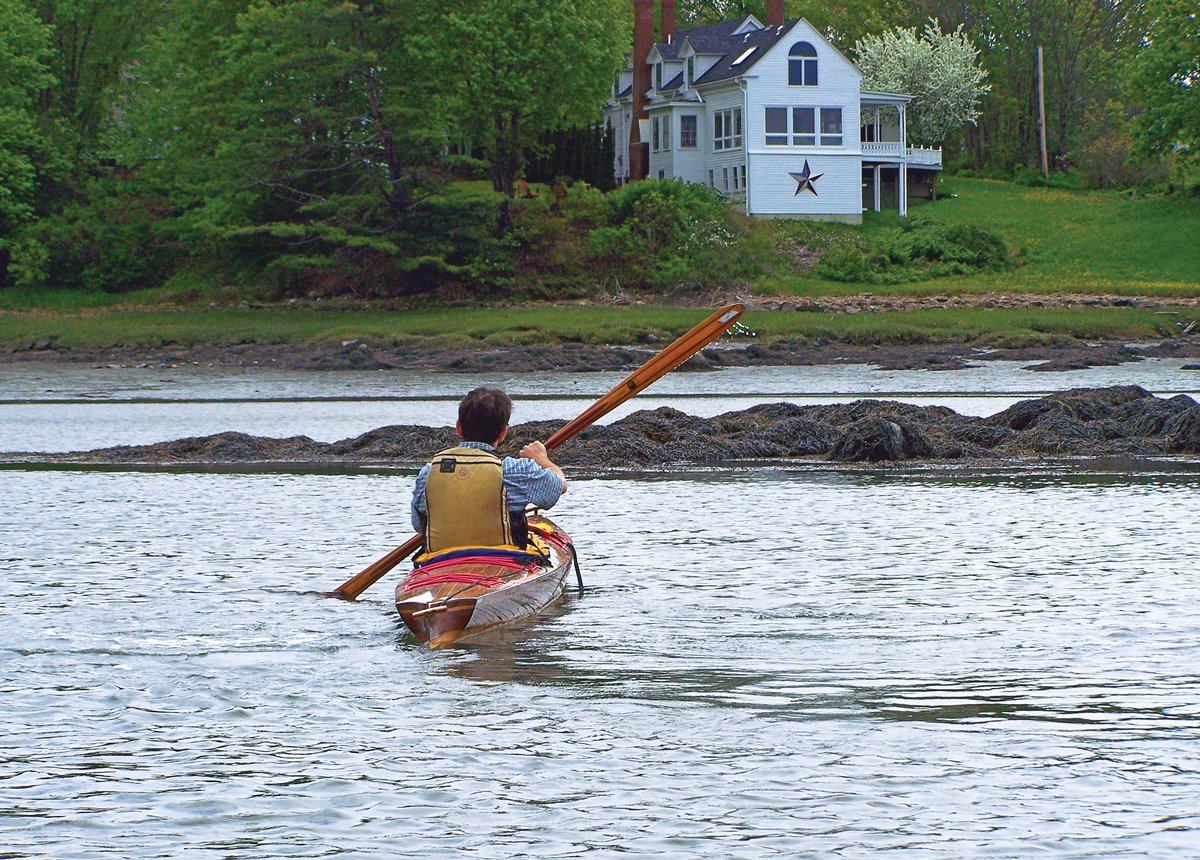 Photo by Serafina Carlucci
Photo by Serafina CarlucciThe “popsicle stick” paddle offers many advantages to the sea kayaker. A small hollow on the power face of the blade keeps the boat moving while its slender form spares it from being caught by sudden gusts. It’s also handy when the paddler needs to grab the blade for better leverage.
First, he uses 3⁄16″-thick strips as opposed to the conventional 1⁄4″. This is a small difference, but he contends that the addition of epoxy and fiberglass cloth gives the hull plenty of strength. The thinner strips make for easier bending and also make the boat somewhat lighter.
Second, Rob uses Northern white cedar below the waterline because of its extreme flexibility, while above the waterline he uses less (but sufficiently) flexible Western red cedar and Northern white spruce.
Finally, he uses a heat gun to ease his strips into all the beautiful shapes that he needs instead of torturing them into submission. The wood’s lignin is reinvigorated by the addition of the heat, resulting in an easier bend and one that will stay put when let go. This boat is perhaps a little more work and more time-consuming to build than other ’yaks, but as I have heard said, “slow is smooth, and smooth is good.” Rob believes that any builder, even a tenacious amateur, can successfully build the North Star, and he estimates that fast builders can do the job in only 300 hours.
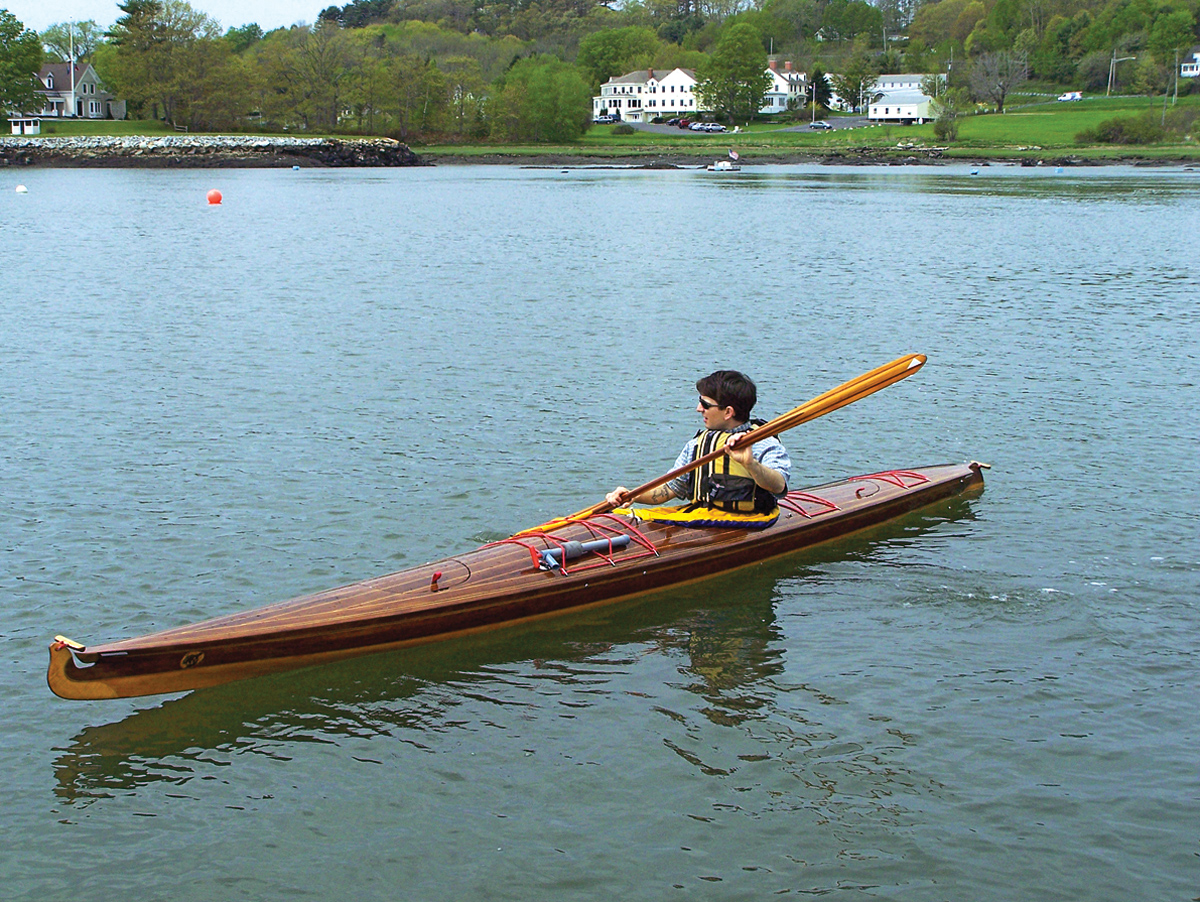 Photo by Serafina Carlucci
Photo by Serafina CarlucciWhile construction of the curvaceous North Star will present some challenges, the sight of her variegated strips under varnish and her agility in the water will make it all worthwhile.
Rob treated me to a paddle in the North Star on the Damariscotta River. There were not many huge waves this day, but we would have current to play with.
Stepping into the kayak, I was surprised at how much flex there was in the wooden hull despite its being sheathed in epoxy and ’glass—perhaps it’s because of that missing 1⁄16″ in the thickness of the strips.
Turning comes from a combination of leaning and utilizing the paddle to get a longer lever arm. The paddle—a work of art in its own right—is an essential part of how this kayak works. Looking nothing like modern paddles with their large blades and carbon-fiber looms, this one is a short, light, spruce popsicle stick–shaped affair that isn’t inclined to be blown about as you use it. The slightly hollow, power face of the blade has just enough surface area to keep the boat moving. If you need more thrust for a particularly sharp turn, you offset the paddle by moving your grip toward one end to create a longer lever arm. Of course, you can do this with any paddle, but the nice thing about these paddles is that you can offset them more because your grip can encompass the narrow blade, which fits nicely in your hand.
As mentioned earlier, the North Star can accommodate larger people (it’s best for people who are around 6′ tall). It is slightly too large for me. So for people of smaller stature, Rob also offers the Fire Star (17′ LOA, 21″ beam, 35 lbs), a scaled-down version of the North Star.
Both of these boats are based on a time-tested design and are meticulously constructed with high-quality materials. Rob has a passion for his designs and a sincere desire to get people building them. He encourages success through a wide variety of teaching aids that cater to different learning styles. His 88-page instruction book has more than 200 photographs of the building process. His website is also filled with tips and techniques that range from how to rip the strips to what type of glue to use and why. He is also very accessible and personable.
The warmth of the varnished wood playing among all of those compound curves makes the North Star a real head-turner. But for Rob, a lot of this is about fun. He enjoys the creative process as well as the building and the helping. Having something beautiful to behold and make use of in paddling into a snug harbor at the end of a day is an amazing reward, but to Rob, that’s just the icing on the cake. ![]()

The North Star’s slightly compressed U-shaped sections strike a happy medium between stability and minimal wetted surface.The profile shows a generous amount of rocker—which reduces wetted surface even further and improves agility.
This Boat Profile was published in Small Boats 2010 — plans are available from Laughing Loon Custom Canoes & Kayaks.
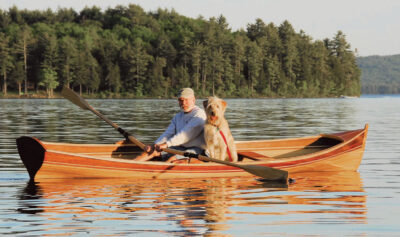
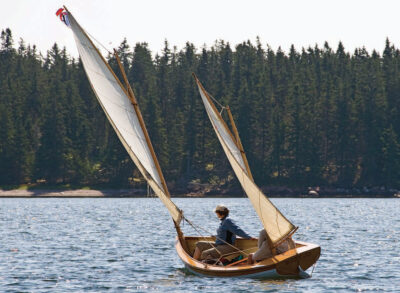
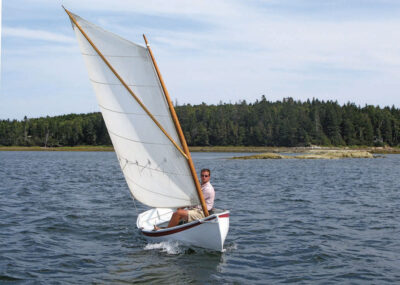
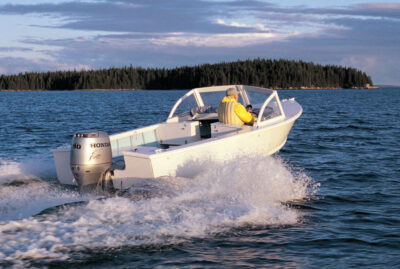
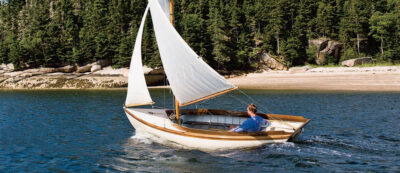
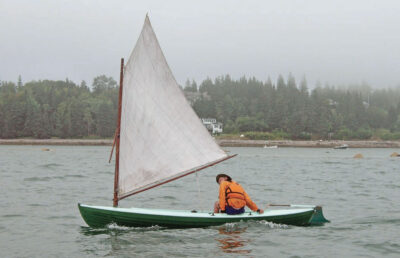


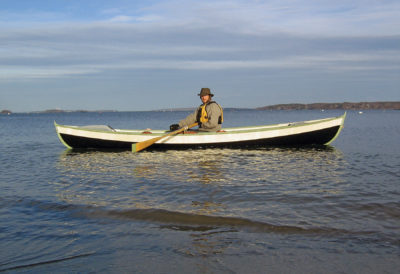
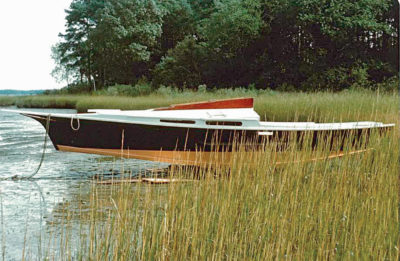
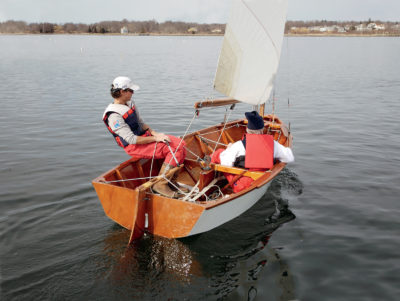
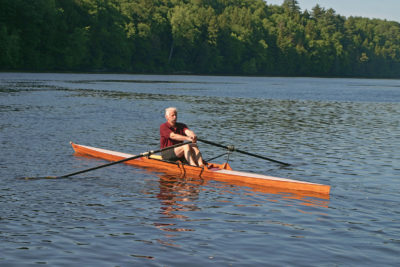
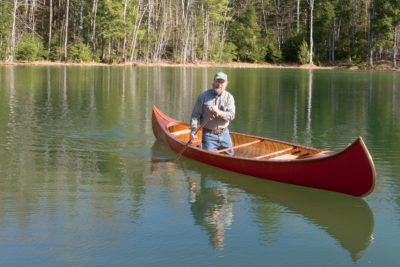
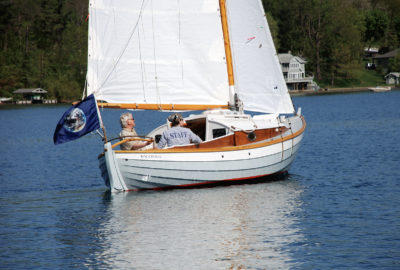
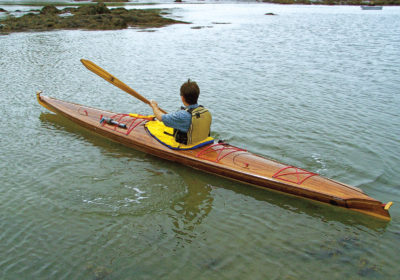
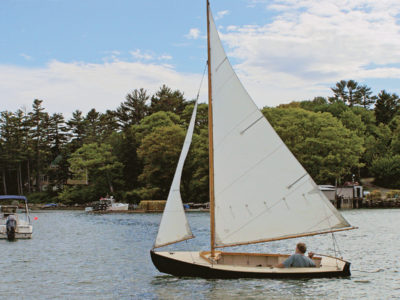
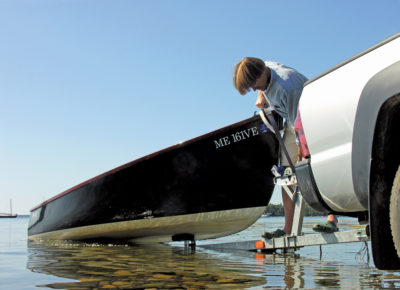
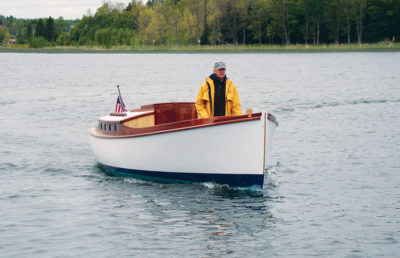
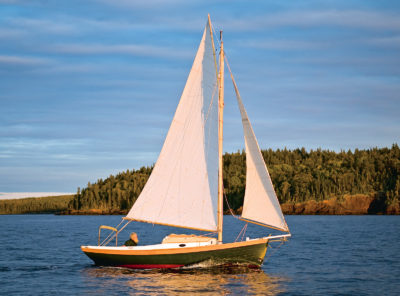
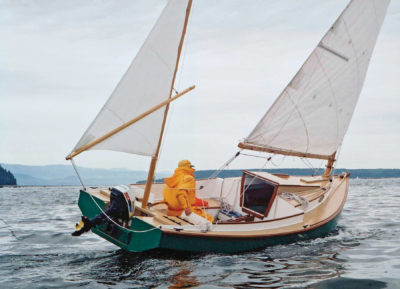
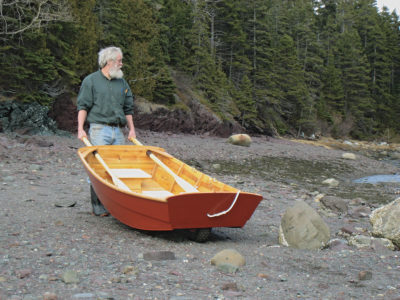
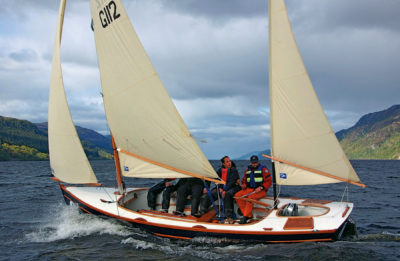
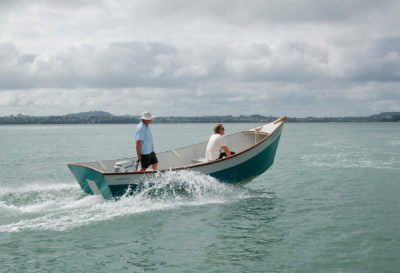

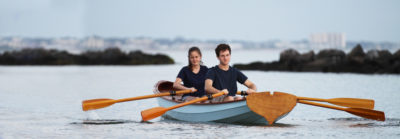

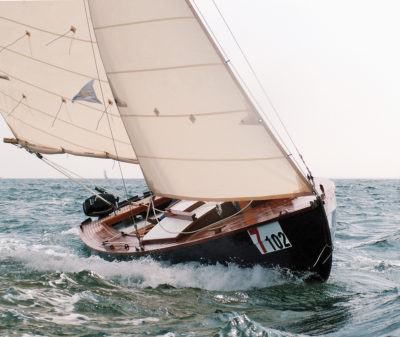

Join The Conversation
We welcome your comments about this article. If you’d like to include a photo or a video with your comment, please email the file or link.